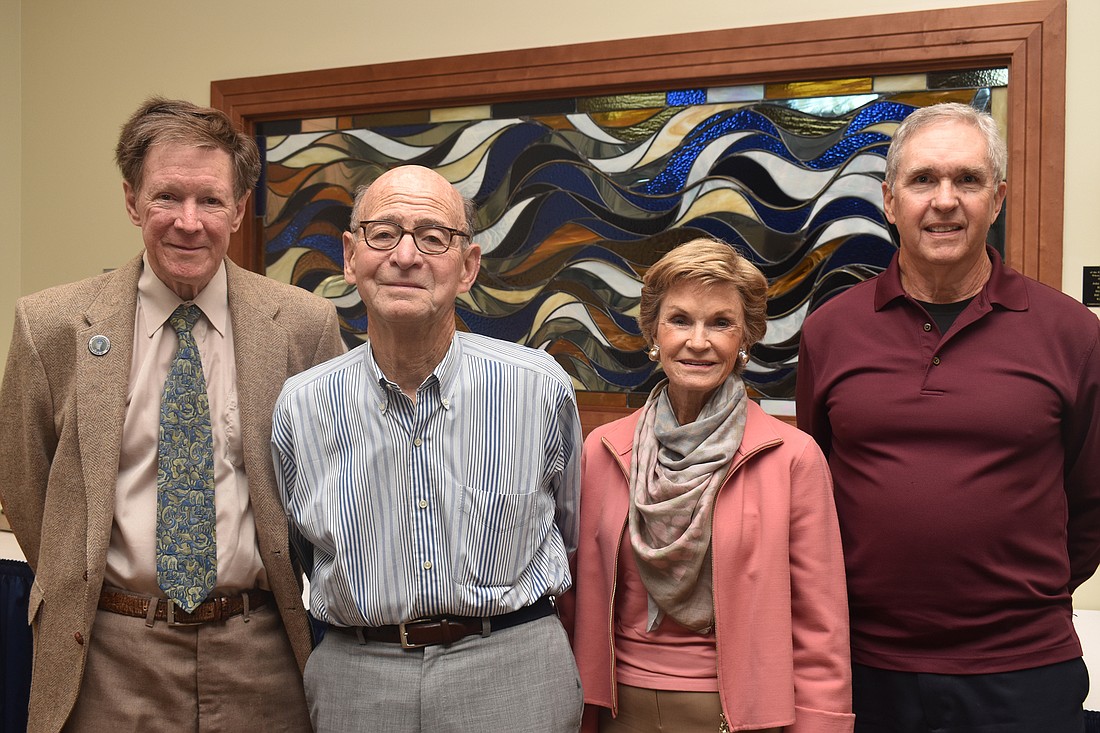- November 17, 2024
-
-
Loading

Loading

After one of Longboat Key’s monthly Physics Club meetings, Pat Anderson happened to stroll out with Peter Seats.
In his British accent, he said he loved the club. Anderson asked him why.
“Well, he said, ‘If I talked about these subjects that we talk about at any of the cocktail parties around here, they would think I was in my cups,’” Anderson said.
The club began 10 years ago after a conversation Leonard Biberman overheard between his wife and Charles Miller’s wife.
Biberman heard that Miller was a physicist, a field Biberman was always interested in, so they met with Pat Anderson at The Blue Dolphin Cafe on St. Armands Circle, and the club was born.
They talked about Planck's constant, which was named after Max Planck and is an important value in quantum physics that links the amount of energy a photon carries to its electromagnetic wave.
Today, the club has grown to a roster of about 60 members.
“We have chemists, we have geologists, computer science, doctors … it’s boundless, the talk of physics, when you look at it, so we don’t really keep it to physics club,” Anderson said. “It’s more like a science club.”
The club meets monthly throughout the year for lunch presentations. Members serve as speakers, except for an occasional guest speaker.
“This is part of being a member of the Physics Club,” Anderson said. “I interview everybody, and they have to be able to give talks. We don’t have room to have people just come and listen, so it’s mostly our members that give the talks, and there is huge diversity.”
The club has proved to be somewhat of a haven for science enthusiasts. In the mix of cocktail parties, tennis matches and other events that fill Longboat Key residents’ social calendars, science rarely has a place among common conversation. Physics Club, though, fills that void, much like Seats explained to Anderson.
"If you want to talk about business or the arts, everybody does that, but scientific and technical issues are fairly rare on the Key."
“I love Longboat Key, but there’s not a science and technical aspect to it, except for the Physics Club,” Frank Sulzman said. “If you want to talk about business or the arts, everybody does that, but scientific and technical issues are fairly rare on the Key. Leonard and Pat have really found a home for people like us, who are interested in these things.”
Jim McGuire, who has been a member for four years, said it’s easy for people to think physics is a narrow field, but that isn’t true. There is physics in medicine. It can tie into computer science. It plays into space exploration.
“It’s hard to say where physics began, but about a good a place as any is Isaac Newton, who developed what we call the laws of motion, and he defined it as a branch of natural philosophy,” Biberman said. “It’s a very fundamental science. It affects our whole comprehension of the physical world.”
When club members present at the lunch meetings, they don’t only talk about their background and expertise areas. Sometimes, members teach themselves something new for a presentation.
“It can be challenging because they’re all bright people, and it forces you to work a little bit hard to learn things,” Sulzman said. “They say if you want to learn something you should teach it, so it’s a good way to force yourself to go through the discipline of learning stuff you’re naturally interested in, but this pushes you to get to a different level.”
Sometimes, members such as Biberman will read a book on a subject that interests them and teach themselves enough for a presentation. Biberman gave such a talk on global warming, and found it challenging.
“As soon as the questions started, I realized most of the people in the audience knew more about it than I did,” he said.
But it’s those questions and challenges that keep the group stimulated and close-knit.
“We can all talk about things that most people don’t understand or really care about, and we learn from each other,” Anderson said.